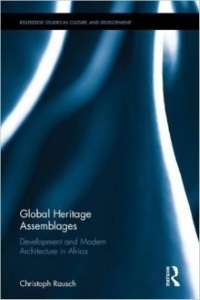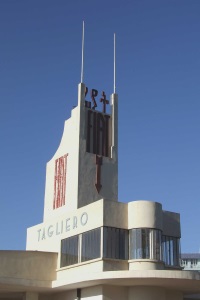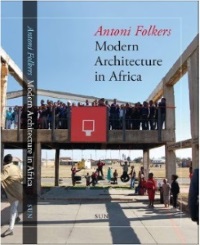Blog Books
Books: Modern African Architecture
A few weeks ago we’ve had an interesting discussion at the Forum about the unfulfilled potential of African sites as future WHS. With some creative thinking we easily came up with possible additions to tentative lists. But especially ‘modern’ sites, connected to for example modern architecture and urban planning, seem to be few and far between. Coincidentally, a recent publication on global heritage matters adresses just this issue.

Global Heritage Assemblages: Development and Modern Architecture in Africa by Christoph Rausch is the publication of a PhD thesis. After a longish introduction of the theoretical framework, the second part of the book focuses on 3 case studies on Modern African Heritage. The most captive is the story of Asmara, up for WH nomination this year. The author shows how both the transnational organizations such as the World Bank and the EU ánd the Eritrean government use the cultural heritage of the Modern Architecture of Asmara for their own purposes. The early 20th century Italian colonial urbanism of Asmara is seen by the transnational organizations as a globally shared heritage, of importance to both colonizers and colonized. This is founded on a “nostalgia for colonial utopias of progress” and on the other hand on the creation of a “new blank canvas” for economic development (for example via heritage tourism and jobs in conservation).

Photo by Solivagant
But while the Eritrean regime welcomes the money that comes with this appreciation, it has its own agenda with Asmara – and it certainly doesn’t want to share! Its reference to the Italian colonial period legitimizes the existence of Eritrea within its current borders and thus enstrengthens nationalism. This difference in views even went so far that Eritrea has not wanted to nominate Asmara for WH status, fearing the responsibilities that come with it and “erosion of sovereignity”. So one of the pitfalls is that ‘modern’ sites in Africa are often linked to colonialism – which isn’t something fairly recent independent countries creating their own identities want to be associated with.
A different book, Modern architecture in Africa by Antoni Folkers, tries to highlight the 'other' modern African architecture. Folkers is a Dutch architect and founder of ArchiAfrika, an organization which also features in the book of Rausch. His knowledge is based on his own experiences in a dozen African countries. This attractively illustrated 350 page book is a very enjoyable read, both for its insights in architecture and world history. An intriguing map of medieval African cities looks like a WHS map with names such as Mapungubwe, Kilwa, Marrakech and Ghadames. At least those seem well-represented on the List.

What about ‘modern’ cities? Casablanca is brought forward in the book for its urban planning and origin of the term ‘bidonville’. It’s on Morocco’s Tentative List, although its future track is unsure as Rabat’s Ville Nouvelle has already been brought forward relatively recently. African metropolises such as Kinshasa and Johannesburg have had to develop their own solutions for urban growth, though no outstanding example of this jumps out. To get away from the colonial bias and the difficult issue of ‘shared heritage’, one would be looking for architecture designed by Africans for Africans in African circumstances.
The author critically looks upon the many preserved colonial fortresses, which seem to get more funding by the former colonizers than strictly African sites. Few outstanding individual buildings are discussed in the book (which is more about urban planning). Noteworthy though are the Kaedi hospital (Mauretania), Gando school and the Koudougou central market (both Burkina Faso). The first two were designed by African architects. They are among the very few Subsaharan African constructions in the wider Islamic world awarded with the Aga Khan award for Architecture. None of them are TWHS, so there might be something to gain here.
Els - 18 February 2017